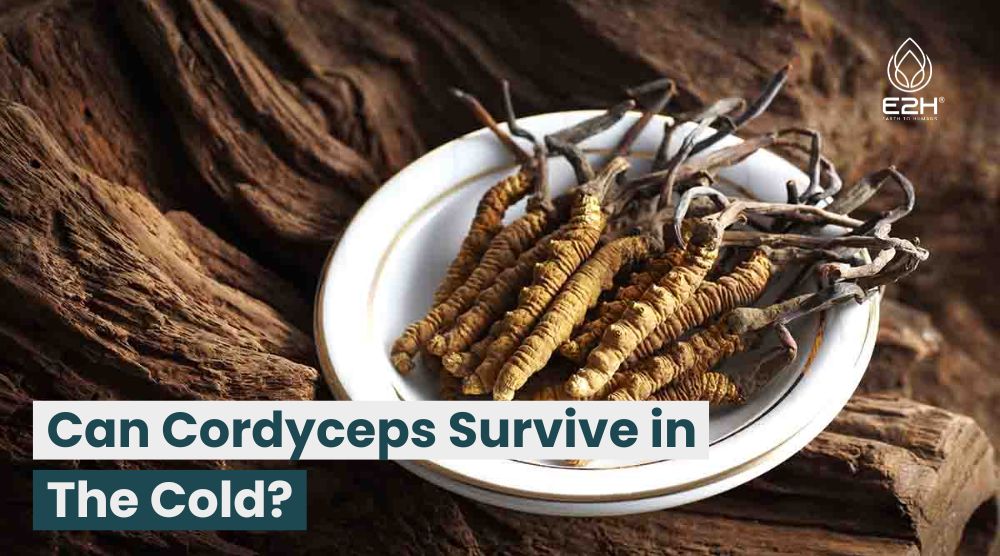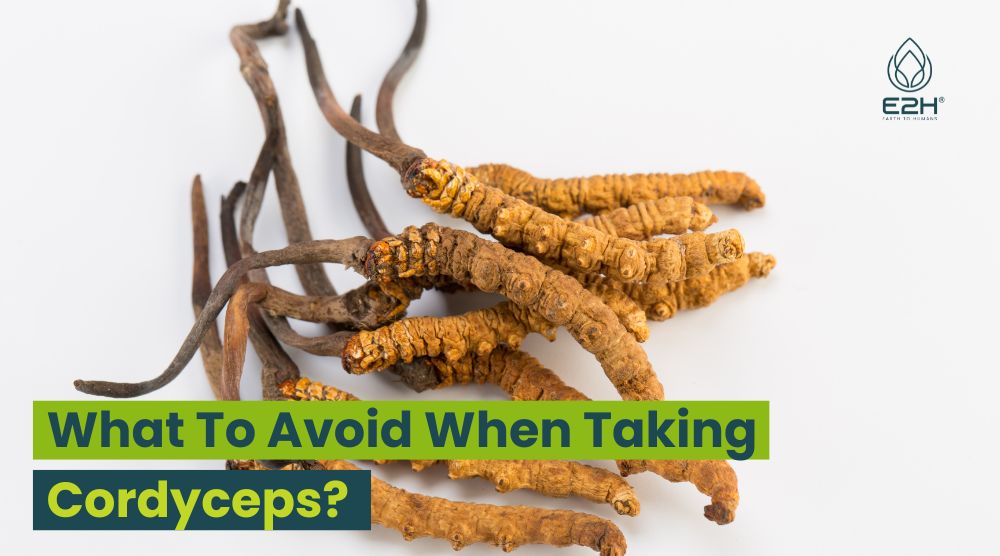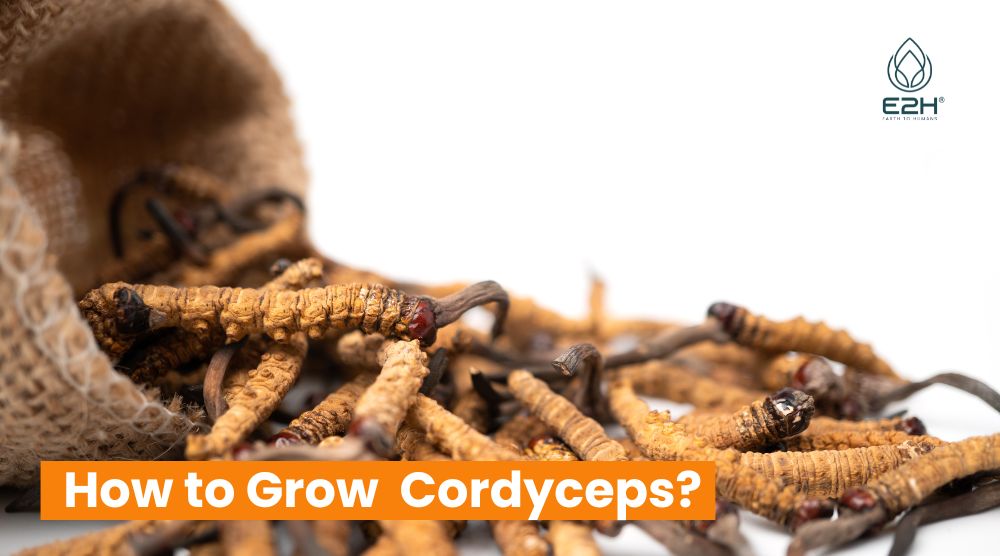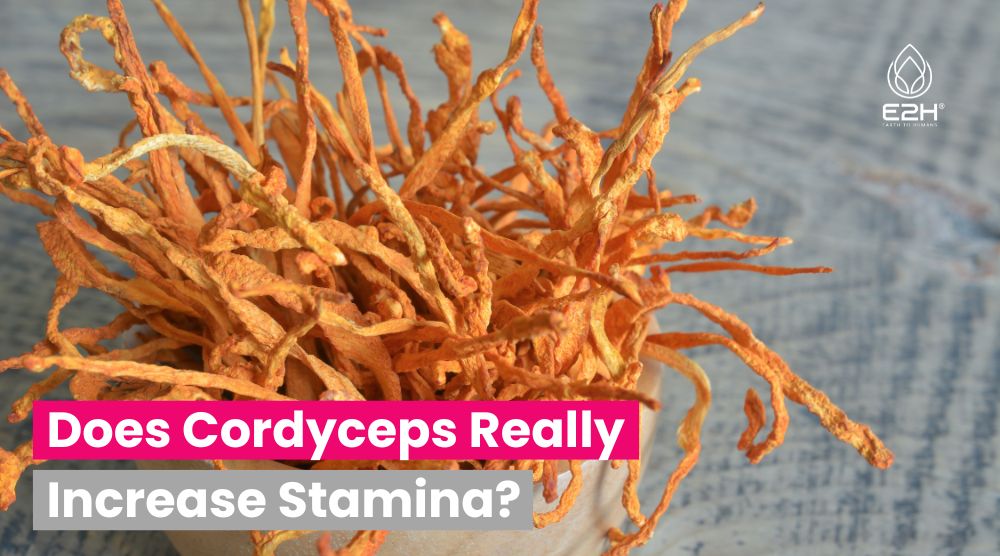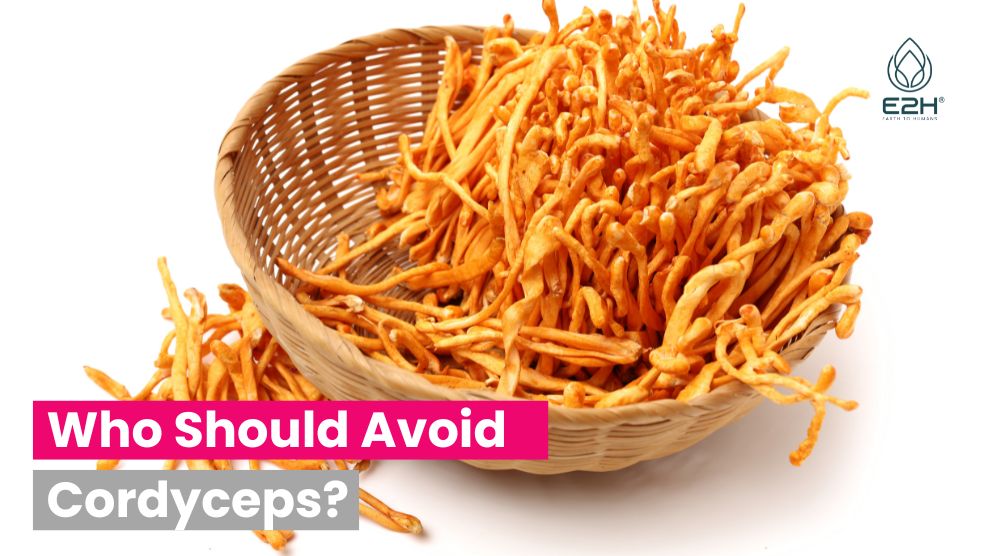Cordyceps fungi are not well-suited for survival in cold temperatures. Freezing conditions can be detrimental, potentially leading to their death or dormancy.
In the frosty embrace of winter’s chill, a captivating mystery unfolds in the world of nature. The question arises: can cordyceps survive in the cold?
As we embark on a journey to uncover the chilling truth, we’ll delve into the depths of Cordyceps’ adaptations and unravel the secrets behind ant species and its uncanny ability to thrive even when the mercury plummets. Join us in this exploration of nature’s enigmatic survivor, Cordyceps, as we navigate the intriguing world of fungi and the mysteries it conceals within the frosty embrace of the cold.
What is Cordyceps, and Where Does it Thrive?
Cordyceps is a fascinating genus of parasitic fungi, encompassing a diverse range of species. These remarkable fungi primarily thrive in environments characterized by temperate and tropical climates. Their habitats span the globe, with notable occurrences in regions like South America and Japan. In these locales and other ants, Cordyceps has gained notoriety for its peculiar ability to parasitize insects, a phenomenon often referred to as the “zombie ant” effect.
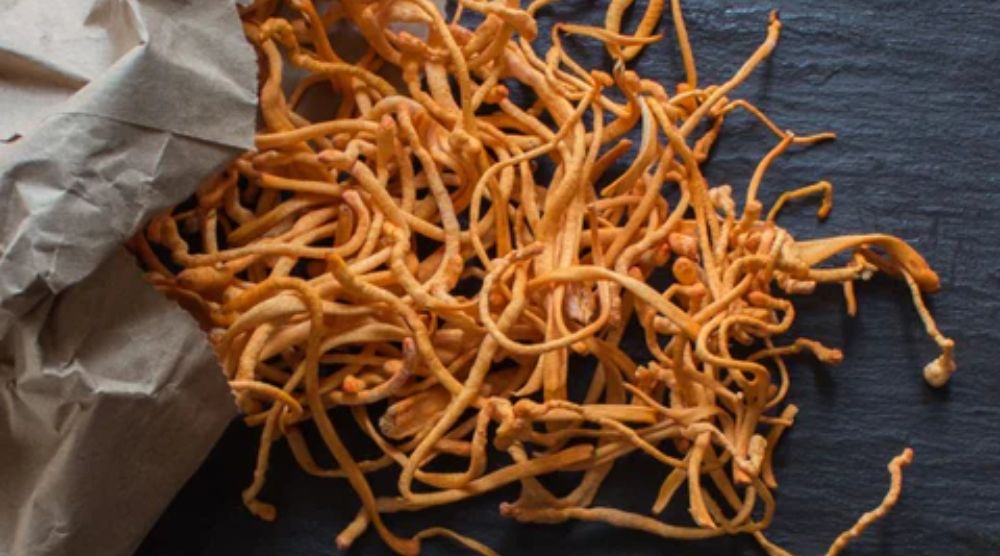
Cordyceps’ affinity for such climates is intricately tied to its life cycle and host preferences. In these temperate and tropical regions, where biodiversity of insect species is abundant, Cordyceps has carved out its ecological niche. It seizes upon various insect hosts, manipulating their behavior and ultimately leading them to their demise. This intricate dance between Cordyceps and its insect hosts is a testament to the complex interplay of life within these regions, where nature’s subtleties and peculiarities continue to unfold.
Can Cordyceps Survive in Freezing Temperatures?
The survival of Cordyceps in freezing temperatures hinges upon several factors, including its host insects’ behavior and the fungus’s own adaptability. While Cordyceps has demonstrated remarkable resilience in temperate and tropical climates, surviving the icy grasp of freezing temperatures presents a different set of challenges.
In colder environments, Cordyceps may employ various strategies to endure. Some species may form dormant structures, allowing them to withstand frigid conditions until more favorable circumstances arise. Others may adapt their life cycles to synchronize with seasonal changes, ensuring that they can parasitize hosts when conditions become conducive.
However, it’s important to note that Cordyceps’ ability to thrive in freezing temperatures may vary among species, and further research on other insects is required to fully comprehend the extent of their adaptability in cold climates. Nevertheless, the world of Cordyceps continues to offer tantalizing insights into nature’s remarkable adaptability.
What temperature kills Cordyceps?
Cordyceps fungi typically thrive in temperate to tropical climates. The exact body temperature, at which Cordyceps is killed can vary depending on the species and its specific adaptations. However, most Cordyceps species are not well-suited to withstand freezing temperatures. Generally, temperatures below freezing (0°C or 32°F) can be detrimental to Cordyceps. Extreme cold can disrupt cellular processes, cause cellular damage, and ultimately lead to the death of the fungus. Still, some species may possess mechanisms to endure cold conditions temporarily, but prolonged exposure to freezing temperatures is generally detrimental.
Best Temperate where Can Cordyceps Survive
| Region | Characteristics |
|---|---|
| South America | Diverse insect populations, especially ants, provide abundant hosts for Cordyceps. Tropical influence. |
| Japan | Favorable temperate climate with a variety of insect species for Cordyceps parasitism. |
| North America | Certain regions offer temperate conditions suitable for Cordyceps, particularly in forested areas. |
| Southeast Asia | Tropical to temperate transition zones provide opportunities for Cordyceps’ adaptation. |
| Himalayan Mountains | High-altitude regions with a range of insect hosts and unique ecological niches for Cordyceps. |
These regions offer varying degrees of temperate climates where Cordyceps fungi have demonstrated their ability to thrive by parasitizing a diverse array of insect hosts. Each environment presents its own set of conditions that Cordyceps has adapted to, making them intriguing subjects for scientific study and exploration.
How Does Cordyceps Take Control of Its Host?
Cordyceps’ ability to take control of its host is a captivating example of nature’s intricate mechanisms. When a Cordyceps spore encounters a suitable insect host, it initiates a series of events that ultimately lead to the fungus gaining control over the host ant’s head, body and behavior.
Upon infection, Cordyceps penetrates the host’s body and begins to manipulate its neural and physiological functions. This manipulation compels the infected host to perform actions contrary to its own survival instincts. For instance, an infected ant may be directed to climb vegetation, positioning the ants and itself in an ideal location for the fungus to grow and disperse its spores.
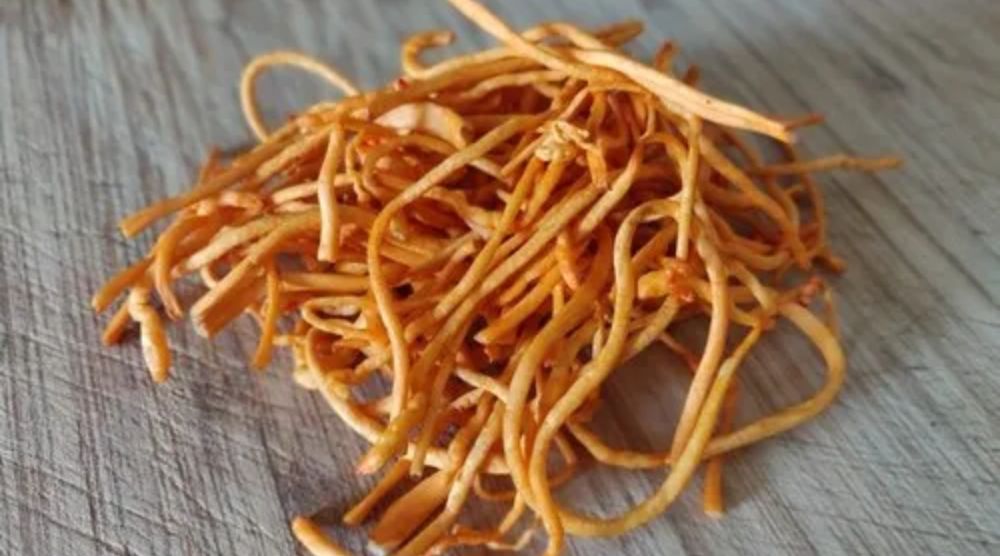
The precise mechanisms behind this mind-control remain an active area of research, but it’s clear that Cordyceps’ ability to hijack the host plant’s nervous system is a key factor. The fungus orchestrates a macabre symphony, leading the host on a path to its own demise while ensuring the propagation of the Cordyceps spores. This complex interplay of parasitism and control is a testament to the remarkable strategies that have evolved in the natural world.
What Happens When Cordyceps Infects an Insect in the Cold?
When Cordyceps infects an insect in cold environments, the dynamics of this parasitic relationship may differ compared to warmer climates. While Cordyceps has evolved to adapt to a range of conditions, cold temperatures can impose unique challenges on both the fungus and its host.
In colder settings, the rate of fungal growth may slow down, affecting the timing of the host’s eventual demise. Additionally, the host insect’s metabolic processes may be slower in the cold, potentially altering the pace at which Cordyceps exerts control over its host’s behavior.
Furthermore, in some cases, the cold may induce a state of dormancy in the parasitic fungus itself, allowing it to endure until more favorable conditions arise. This dormancy may enable Cordyceps to persist in a sort of suspended animation, biding its time until the host’s vital functions become more susceptible to manipulation.
The specifics of how Cordyceps interacts with its host in the cold are still a subject of ongoing research, highlighting the complex interplay between parasitic fungi and their environments.
Are There Different Species of Cold-Adapted Cordyceps?
In temperate and cold regions, particularly in high-altitude mountainous areas such as the Himalayas, various species of Cordyceps have been identified. Some of these species include:
- Cordyceps sinensis: This is one of the most well-known and economically valuable species of Cordyceps. It thrives in the high-altitude regions of the Himalayas and Tibetan Plateau. Cordyceps sinensis has evolved to survive in the extreme cold and harsh conditions of these elevated landscapes.
- Cordyceps militaris: While Cordyceps militaris is often found in temperate regions, it has shown adaptability to colder environments. It is cultivated in some regions with colder climates for its medicinal and culinary uses.
- Cordyceps sobolifera: This species has been discovered in cold regions of North America, including parts of Canada. It demonstrates Cordyceps’ ability to adapt to temperate and colder climates.
- Cordyceps tenuipes: This species has been found in various temperate and cold regions, including parts of Asia and North America. It highlights the adaptability of Cordyceps to a range of climates.
- Cordyceps ophioglossoides: This species, commonly known as the “adder’s tongue,” is found in temperate and colder regions of North America. It infects a variety of insects and showcases Cordyceps’ presence in temperate climates.
These examples illustrate that Cordyceps fungi are not limited to warm or tropical environments. They have evolved and diversified to thrive in temperate and cold regions as well, each species adapting to the specific conditions of its habitat.
Can Cordyceps Survive in Extreme Cold, Like Arctic Temperatures?
Cordyceps’ ability to survive in extreme cold, such as Arctic temperatures, is a topic that continues to intrigue scientists. While this genus of fungi has displayed remarkable adaptability, thriving in the harshest cold environments presents significant challenges. The Arctic’s frigid temperatures, often plummeting well below freezing, create an inhospitable setting for most life forms.
Some Cordyceps species may possess adaptations that enable them to endure extreme cold. For instance, certain species could produce specialized structures or chemicals that act as antifreeze agents, preventing the formation of ice crystals within their cells. These adaptations would help Cordyceps maintain cellular integrity in sub-zero temperatures.
However, it’s essential to acknowledge that not all Cordyceps species may share these adaptations, and further research is necessary to identify which, if any, can withstand Arctic conditions. The extreme cold of the Arctic remains a formidable challenge even for nature’s most resilient organisms.
Is Cordyceps’ Survival Affected by Climate Change?
Climate change is reshaping ecosystems worldwide, impacting species’ distributions and behaviors. Cordyceps, too, may feel the effects of this global phenomenon. As temperatures shift and habitats transform, Cordyceps’ survival strategies may need to adapt in response.
One potential consequence of climate change is altered host availability. If the insect species that the Cordyceps fungus relies on for its life cycle are affected by changing temperatures or habitat disruption, it could impact the fungus’s reproductive success. Additionally, shifts in the timing of seasonal events, such as the emergence of insects, could disrupt the synchronization required for Cordyceps’ life cycle.
Moreover, as temperatures rise, Cordyceps may encounter new environments that were once too cold for its survival. This expansion into previously inhospitable regions for plants could have unpredictable consequences for both Cordyceps and the ecosystems it interacts with.
Understanding the intricate interplay between Cordyceps and climate change is an ongoing area of research, and it underscores the complex web of relationships that bind organisms to their environments.
Can fungi survive in cold environments?
Yes, many fungi, including certain Cordyceps species, have evolved mechanisms to survive in cold environments. These adaptations may include the production of antifreeze proteins to prevent ice crystal formation within their cells, entering a dormant state during colder months, or forming protective structures like spore-bearing bodies. While they can withstand cold temperatures to some extent, the survival and growth of fungi in cold environments are often influenced by the species’ specific adaptations and the duration of cold exposure.
Can fungi survive in the snow?
Some fungi, including certain Cordyceps species, can indeed survive in snowy environments. These fungi often have specialized adaptations to cope with cold and snow-covered conditions. They may persist in a dormant state within the substrate (soil or organic matter) beneath the snow, awaiting more favorable conditions for growth. Additionally, fungal spores can be resilient and may remain viable even when exposed to snow and freezing temperatures. Once conditions become conducive, these fungi can resume their growth and reproductive processes.
What role do fungal spores play in the life cycle of Cordyceps?
Fungal spores are a crucial aspect of Cordyceps’ life cycle. These microscopic structures serve as the means of reproduction and dispersal for the fungus. When Cordyceps infects an insect host, it ultimately leads to the death of the host. Following this, the fungus produces specialized spore-bearing structures, often emerging from the host’s body. These structures release countless spores into the environment. These spores can then infect new insect hosts, continuing the cycle of parasitism and propagation for Cordyceps.
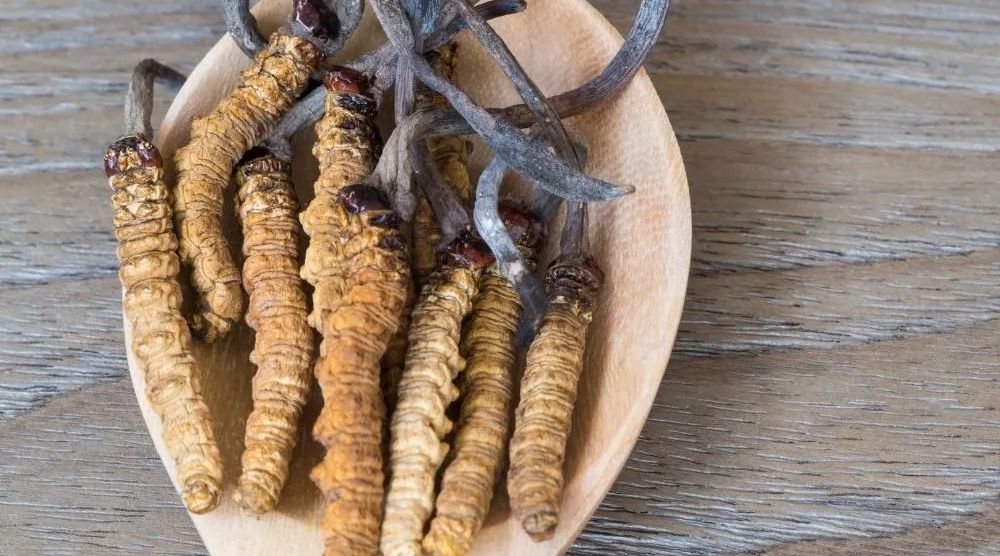
Are there any natural remedies or treatments for fungal infections caused by Cordyceps?
While Cordyceps fungal infections are primarily associated with insects and other arthropods, there is limited documented evidence of Cordyceps infections in humans. However, if such infections were to occur, antifungal medications commonly used to treat fungal infections in humans might be employed.
Natural remedies for fungal infections, such as topical or oral antifungal agents, might also be considered. However, it’s important to emphasize that the likelihood of Cordyceps infections in humans is exceedingly rare, and treatment would require a comprehensive assessment by a medical professional.
Can fungal spores, including Cordyceps, survive inside the human body?
Fungal spores, including those of Cordyceps, can potentially survive briefly if inhaled or ingested by humans. However, the human immune system is typically adept at recognizing and combating fungal invaders, including spores. In most cases, fungal spores that enter the human body do not lead to infections. Instead, they are efficiently eliminated by the immune system. The survival of fungal spores within the human body is generally brief and poses minimal health risks under normal circumstances.
Could the Cordyceps Fungus Really Take Over?
FAQs
Can Cordyceps infect humans like it does insects?
Cordyceps primarily targets insects and doesn’t commonly infect humans.
Are Cordyceps used in traditional medicine?
Yes, some Cordyceps species have medicinal uses in traditional Chinese and Tibetan medicine.
Can Cordyceps spores be harmful if inhaled?
Inhaling Cordyceps spores is generally not harmful to humans, as they don’t typically infect our species.
Do Cordyceps have nutritional benefits for humans?
Certain Cordyceps species are considered potential sources of nutrients and are used in dietary supplements.
Can Cordyceps survive extreme heat?
Cordyceps fungi are more adapted to temperate and cold environments, and extreme heat can be detrimental to them.
Conclusion
In conclusion, our exploration into the survival capabilities of Cordyceps in cold environments has unraveled a fascinating tale of adaptability. This remarkable fungus, known for its uncanny control over its insect hosts, has demonstrated resilience even in the face of freezing temperatures.
While specific species and mechanisms may hold the keys to its success in the cold, the enigma surrounding Cordyceps’ survival continues to beckon further investigation.
As we ponder its ability to withstand extreme cold and potential implications in a changing climate, Cordyceps remains a testament to nature’s tenacity and the ongoing quest to understand the secrets of life’s enduring adaptability.
